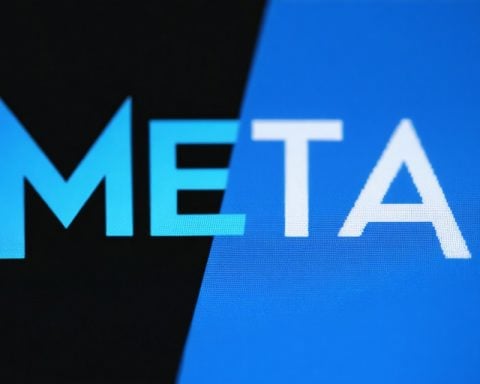In a surprising turn of events, Nvidia witnessed a decline in its stock value despite posting strong third-quarter earnings that exceeded expectations. The tech giant, renowned for its leadership in artificial intelligence and GPU production, saw its stock dip over 3% on Friday. The key issue was the company’s forecast, which was seen as only marginally better than what analysts had anticipated.
Market Anticipation vs. Reality
Many financial analysts and investors had high hopes for Nvidia’s forward guidance, expecting an aggressive outlook that never materialized. Although Nvidia’s projections were considered solid amid ongoing supply challenges, some experts described them as slightly below the most optimistic predictions.
Stacy Rasgon from Bernstein Research noted that although the forecast may have been conservative, there were indications of potential positive developments. The remarks about Nvidia’s Blackwell and Hopper technology forecasted an upward trend, suggesting future opportunities for growth despite current constraints.
Analyst Reactions and Stock Movements
Despite a downgrade from Phillip Securities due to recent stock price fluctuation, analyst Ben Reitzes from Melius Research remains bullish on Nvidia, arguing that concerns about supply issues are overstated. He emphasizes Nvidia’s potential for over 50% growth in the next year, crediting the company’s resilience and appeal in the tech sector.
On Friday afternoon, Nvidia shares fell to $142.08, but they managed to stay above the critical consolidation point of $140.76, maintaining a slight gain for the week. Investors are keeping a close eye on the company’s performance, particularly as its new position in the Dow Jones Industrial Average adds another layer of intrigue to its future prospects.
Is Nvidia’s Stock Volatility a Sign of Greater Market Shifts?
Nvidia’s recent stock fluctuation has stirred discussions not just about the company’s performance, but its broader implications for tech markets and the economies that depend on them. While Nvidia’s earnings exceeded expectations, their conservative forecast left some investors uneasy. This raises important questions about the intricate dance between financial markets and real-world technological progress.
The Ripple Effect on Communities and Economies
Nvidia’s role as a leader in artificial intelligence and GPU production places it at the heart of several key industries, including gaming, cryptocurrency mining, and data centers. This means that any change in Nvidia’s standing could have a significant impact on these sectors. For instance, local economies reliant on tech-driven jobs might find themselves navigating new economic dynamics if Nvidia’s growth falters.
Nvidia’s innovations have also propelled advancements in autonomous vehicles and smart city technologies, making it a linchpin in modern urban planning. Thus, any potential slowdown could ripple through to municipalities counting on tech-driven solutions for urban challenges.
Interesting Facts and Controversies
Did you know that Nvidia’s GPUs are not only used for gaming and AI but are instrumental in advancing realms like deep learning and scientific research? The company’s technology powers a wide array of scientific simulations, helping researchers solve complex problems—from climate modeling to molecular synthesis in drug development.
Yet, Nvidia’s dominance isn’t without controversy. Its position as a leading GPU manufacturer has drawn antitrust scrutiny, with critics arguing that its business practices could suppress competition and innovation. This ongoing debate reflects broader questions about market consolidation in tech and its long-term effects on innovation.
Pros and Cons of Nvidia’s Market Position
Advantages:
1. Innovation Driver: Nvidia’s consistent technological breakthroughs often set the pace for the entire tech industry, fostering advancements that benefit consumers and businesses alike.
2. Economic Contribution: Nvidia’s growth contributes significantly to economic development, especially in tech hubs where their operations create high-value jobs.
Disadvantages:
1. Market Volatility: As seen with the recent stock fluctuations, Nvidia’s market presence can lead to economic instability, affecting investors and dependent industries.
2. Competition Concerns: Their dominance may stifle smaller competitors, potentially slowing innovation and leading to fewer choices for consumers.
Key Questions and Answers
Why did Nvidia’s stock dip despite strong earnings?
The dip is largely attributed to investor disappointment in the company’s conservative forecast, which did not meet high market expectations despite strong current earnings.
What could this mean for the tech industry?
Nvidia’s pivotal role in numerous sectors means its performance signals broader trends. A slowdown could herald challenges for sectors like AI and data centers, while a robust rebound might spur new investments.
Can Nvidia’s growth trajectory continue despite recent setbacks?
While short-term challenges exist, analysts, including Ben Reitzes, believe Nvidia has substantial growth potential due to its strategic positioning and technological prowess.
For more insights into Nvidia’s technological impact and market analysis, visit Nvidia’s Tech Overview and Nvidia’s Market Analysis.






















